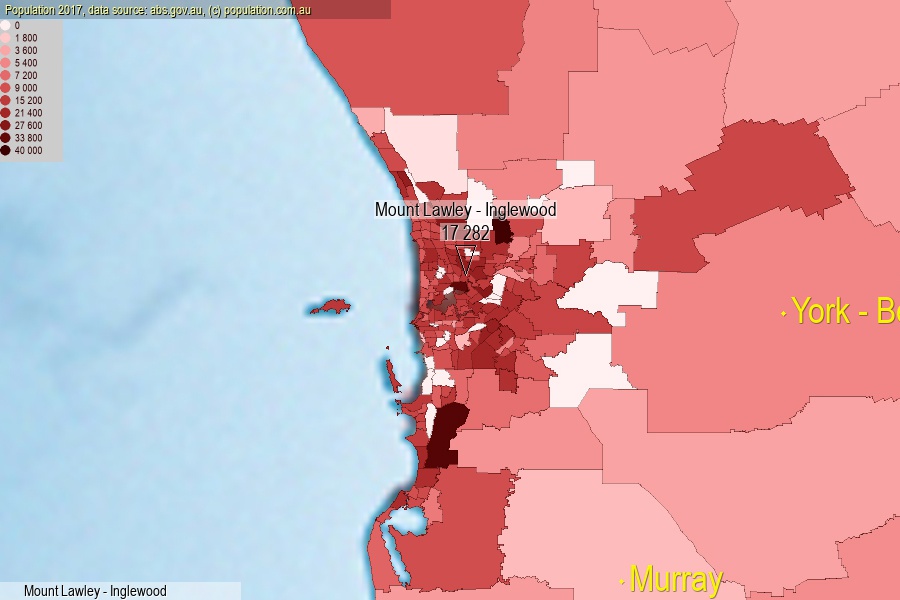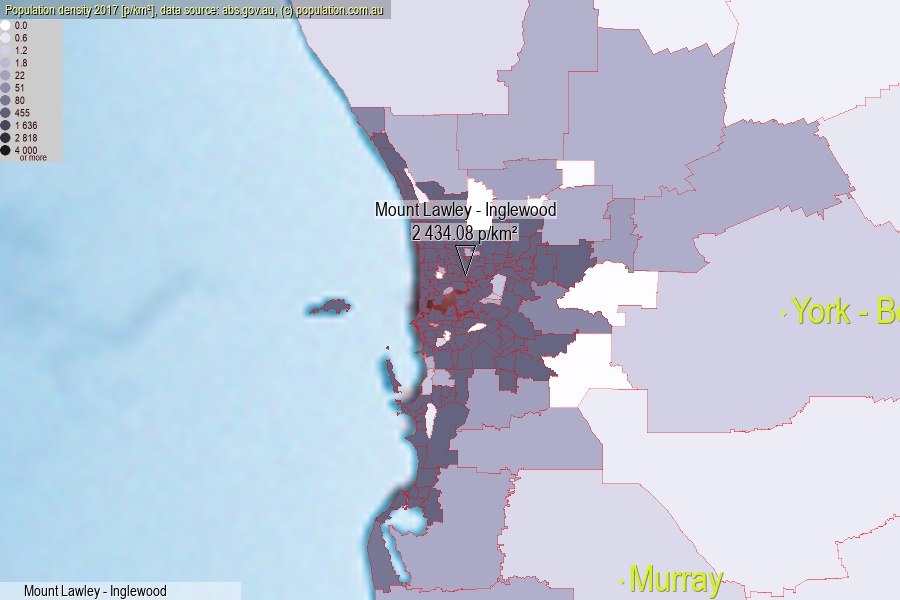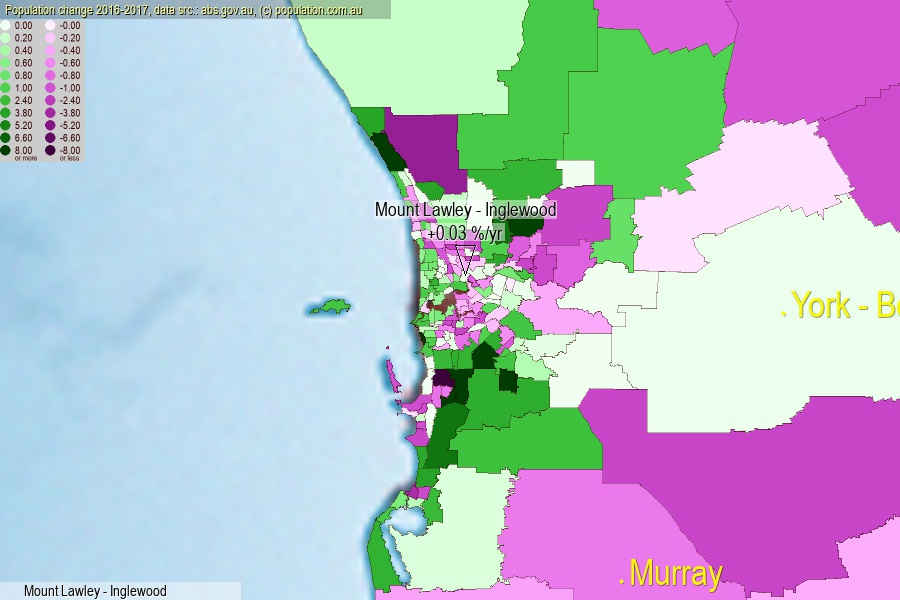 population.com.au
population.com.auLast official estimated population of Mount Lawley - Inglewood (as Statistical Area Level 2) was 17 282 people (on 2017-06-30)[2]. This was 0.07% of total Australian population and 0.667% of WA population. Area of Mount Lawley - Inglewood is 7.10 km², in this year population density was 2 434.08 p/km² . If population growth rate would be same as in period 2016-2017 (+0.03%/yr), Mount Lawley - Inglewood population in 2025 would be 17 330. [0]



Click to enlarge. Mount Lawley - Inglewood is located in the center of the images.
Population [people], population density [p./km²] and population change [%/year] [2]
View borders » (new window) [4]
[1991-1992] +2.56 %/Yr.
[1992-1993] +2.59 %/Yr.
[1993-1994] +1.79 %/Yr.
[1994-1995] +2.87 %/Yr.
[1995-1996] +3.33 %/Yr.
[1996-1997] -0.07 %/Yr.
[1997-1998] -0.12 %/Yr.
[1998-1999] -0.02 %/Yr.
[1999-2000] +0.05 %/Yr.
[2000-2001] +0.29 %/Yr.
[2001-2002] +0.64 %/Yr.
[2002-2003] +0.58 %/Yr.
[2003-2004] +0.24 %/Yr.
[2004-2005] +0.81 %/Yr.
[2005-2006] +0.80 %/Yr.
[2006-2007] +1.90 %/Yr.
[2007-2008] +3.62 %/Yr.
[2008-2009] +1.91 %/Yr.
[2009-2010] +1.08 %/Yr.
[2010-2011] +2.35 %/Yr.
[2011-2012] +0.64 %/Yr.
[2012-2013] +0.23 %/Yr.
[2013-2014] -0.15 %/Yr.
[2014-2015] -0.25 %/Yr.
[2015-2016] -0.44 %/Yr.
[2016-2017] +0.03 %/Yr.
[0] Calculated with linear interpolation from officially estimated population
[1] Read more about SA2 and Australian Statistical Geography Standard (ASGS) on abs.gov.au
[2] Population data from Australian Bureau of Statistics (Population and density: 2017; change: 2016-2017)
[3] Digital Boundaries: Australian Statistical Geography Standard (ASGS) 2016.
[4] Border coordinates are simplifyed using Ramer-Douglas-Peucker algorithm.